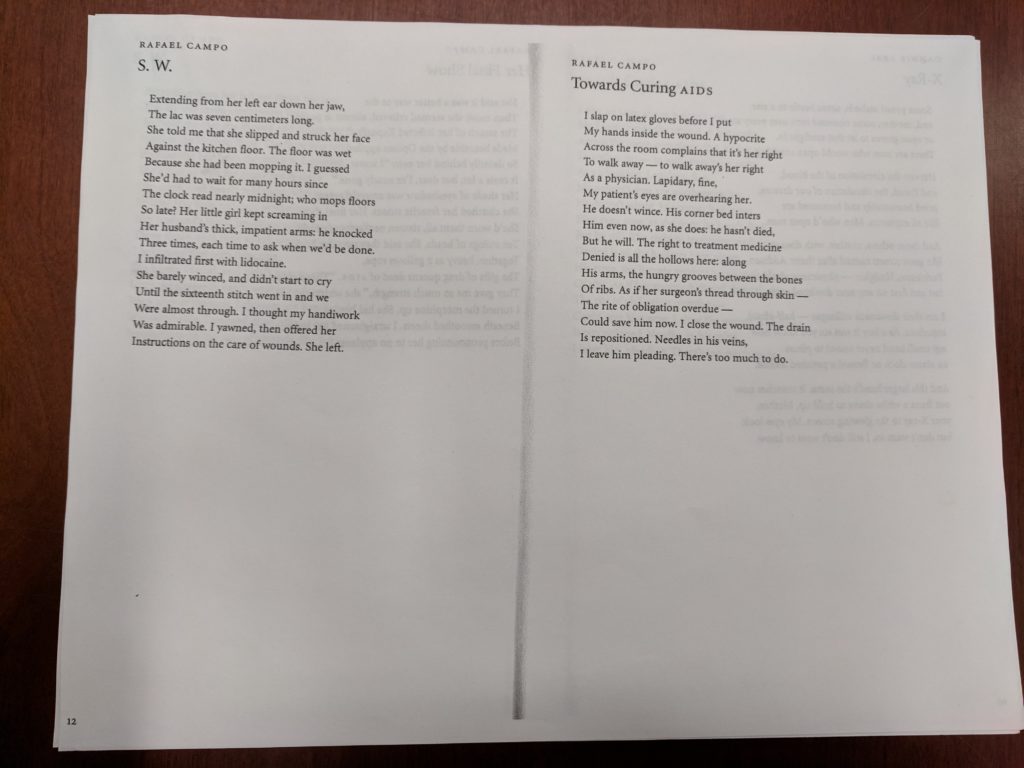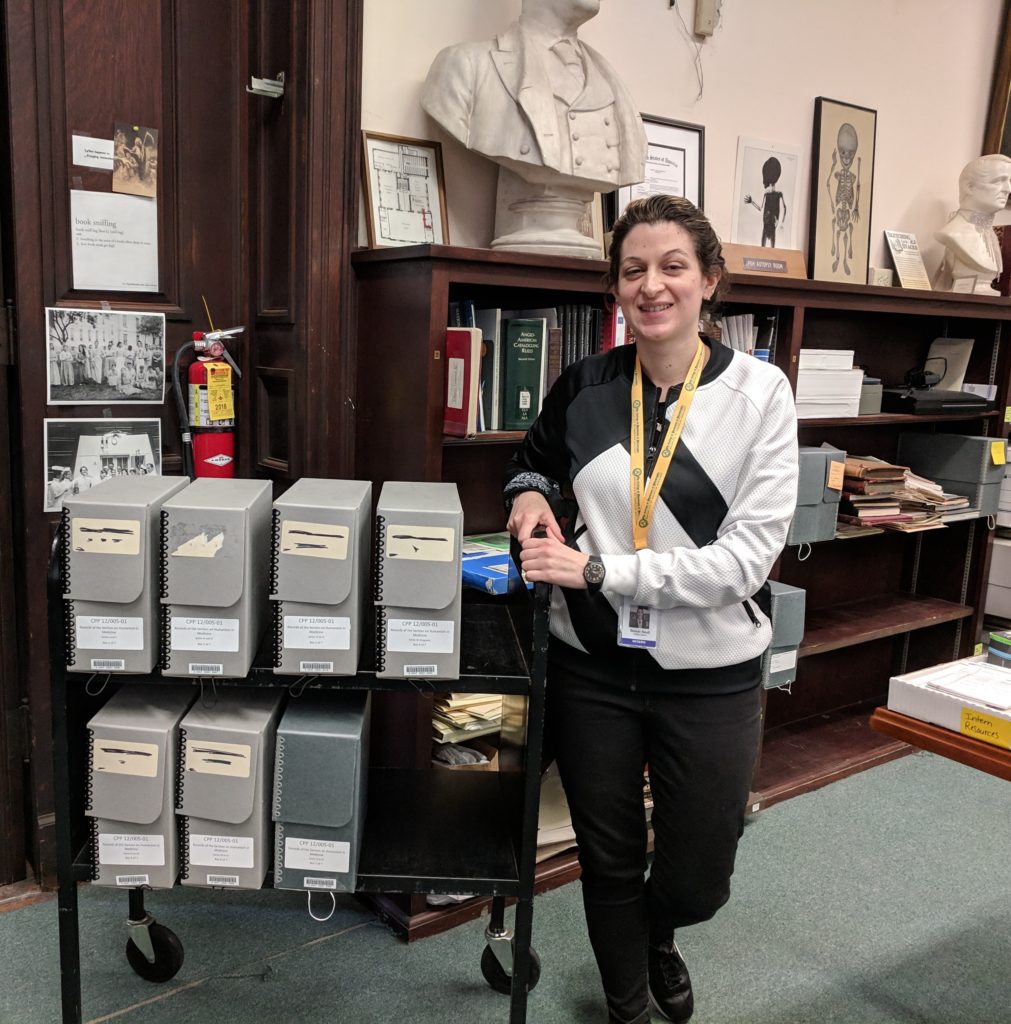– by Bonnie Small, Archives intern
Segments of Albert Einstein’s brain? A syphilitic face? How about a jar of skin pickings? Where else in the world can so many medical oddities exist under one roof? Growing up in Philadelphia, the Mütter Museum’s impressive collection of the strange and unusual had left its mark on my macabre side from an early age. When I decided to pursue my Masters in Library and Information Science (with an archives concentration) through the University of Wisconsin Milwaukee’s online program, I knew exactly where I would apply for an internship.
The College of Physicians of Philadelphia (CPP) is the parent organization of both the Mütter Museum and the Historical Medical Library. Prior to my internship, I was unaware that just above the museum’s marble staircase resides the world-renowned research library specializing in the history of medicine. I came to regard the Historical Medical Library as a sanctuary from the noisy crowds entering the museum below and as a hidden gem powering the museum’s exhibits. And more importantly, it became my designated work space during my internship.
Over the past several months, I have been arranging and describing Records of the Humanism in Medicine Program. This initiative, which was active from 2000-2007, was designed to enrich the curriculum of local medical schools in the area. The Program aimed to bridge the arts and humanities with medicine, inviting visiting scholars, doubling as successful poets and writers, to present their compositions and artists to exhibit their creations surrounding the core theme of hope and healing amongst pain.
The collection consists mostly of paper materials (with some mixed materials) involving speaker lectures or artist exhibitions offered at CPP during these years. The bulk of the paper materials include printed email correspondence between CPP and visiting scholars/artists concerning the logistics of their presentation at the College, any corresponding promotional items, RSVPs, and speaker evaluations related to their event.
Processing the collection was tiresome at times because of the straight-forward subject matter littering homogeneous documents. As I mentioned above, the collection contains mostly printed emails about speaker presentations at CPP. However, noteworthy items would occasionally catch my eye, such as Dr. Campo’s poems or promotional material featuring artwork from exhibits at the College (see images below). While processing the collection was tedious, I now have a deeper understanding of how to arrange and describe a collection from beginning to end. And I intend to apply this valuable hands-on experience as I move forward in the archives field.
Of course, there were some enjoyable aspects to processing the collection. My OCD side delighted in generating series for the collection (though I think I might have gone overboard with 11 series). I input most of the series information into an EAD Excel-based spreadsheet which was then uploaded into a finding aid resource in ArchivesSpace. I had the opportunity to work directly in ArchivesSpace, adding information not generated from the EAD spreadsheet, such as a biographical/historical note, scope and contents, abstract, dates, extent, subject headings, and other descriptive fields. While I have used this finding aid tool before, I was able to explore its program functionality in greater detail.
Researchers interested in the arts and humanities in conjunction with medicine will appreciate learning about the body of work by past CPP speakers and artists in the Humanism in Medicine Program. The section records might also spur researchers to further investigate these featured speakers and their contributions to society.
I would also like to thank Chrissie for her guidance as my internship supervisor at the Historical Medical Library. It was a pleasure working for her and absorbing her expertise as an archivist. I especially enjoyed our trips into the stacks, where she would point out all the wonderfully rare books in residence.
The below items are worth pointing out: 1) and 2) “medical curiosities”: these color copy photos were used as handouts for a speaker presentation; 3) poet and doctor: a poem by Dr. Campo performed during his lecture; 4) “Saving Faces”: promotional material for an artist exhibition.




You can view the finding aid for the Records of the Humanism in Medicine Program here.

